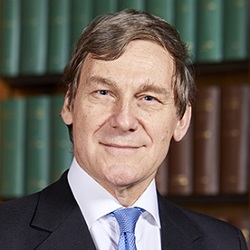A Supreme Court Justice has cast doubt on the value of the centuries-old practice of taking witness testimony in person, suggesting demeanour is of little help to judges or juries in determining the truth.
Lord Leggatt outlined the findings of extensive recent research into lying and deception, showing impressions of truthfulness were worth barely more than statistical chance.
Giving a lecture [2] last week, entitled Would you believe it? The relevance of demeanour in assessing the truthfulness of witness testimony – to which question 85% of the audience of 200 had answered ‘yes’ – the judge said so-called hearsay documentary evidence, such as electronic recordings, was increasingly the best evidence in most cases.
But it remained the case that courts often depend on witness evidence to establish facts, he observed. Since an influential essay written in 1985 by the former Lord Chief Justice, Lord Bingham, suggesting reasons for distrusting demeanour as a guide to honesty, there had been much research published on lie detection.
The issue had achieved more prominence due to a focus on whether Islamic women wearing a niqab – a veil covering most of their face – should be allowed to give evidence.
Hundreds of academic studies involving thousands of participants, had shown “strikingly consistent” results, he said.
“They have consistently found that, when people are asked to judge whether individuals are lying or telling the truth from how they appear and behave when speaking, such judgments are accurate on average just slightly more than half the time.”
A huge umbrella study of research across the world found the average accuracy of judgements was just 54%. “In other words, on average, accuracy was slightly better but only slightly better than chance,” Lord Leggatt concluded.
It made little difference to accuracy when the speaker could be both seen and heard or could only be heard but not seen. The same was true in relation to other factors, such as who was asking questions or the length of the interview.
Supposed experts in lie detection – such as police officers, psychiatrists or even judges – were no more accurate in their assessments than lay people.
Even the performance of the best and worst human lie detectors was hardly any different from one another.
Further evidence of the unreliability of witness evidence, the judge said, came from the fact that the things that people believed to be proof of lying, such as lack of eye contact, fidgeting, nervousness or hesitancy, were very largely untrue and based on factors unrelated to truthfulness.
Lord Leggatt said the research showed that, “if you try to infer veracity from demeanour, you are likely to be fooled by witnesses who have an honest demeanour but are lying and to disbelieve witnesses who have a poor demeanour but are in fact giving honest evidence”.
The key finding was that witness demeanour was almost equal as a guide to truthfulness to chance: “There is extensive scientific research showing that, as a method of distinguishing truth-telling from lying, judging on the basis of demeanour is slightly, but only slightly, more reliable than spinning a coin.
“This finding is, I think, enough by itself to demonstrate that attaching any weight to demeanour in making such assessments is not a rational approach to decision-making.”
This did not mean giving up on the idea that it was possible to make reliable judgments about whether someone was lying, however.
There was research into other methods of assessing whether a witness was lying, “such as inferences based on various kinds of inconsistency”, while cross-examination could “sometimes be an effective method for exposing lies”.
But time did not permit him to expand on these ideas.
